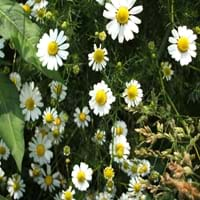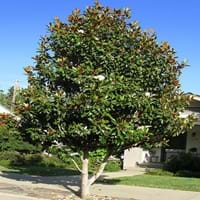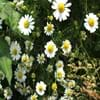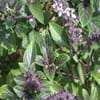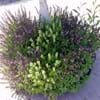Life Span
Perennial
Perennial
Type
Herbs
Broadleaf Evergreen
Origin
Europe, Western Asia, India
Southeastern United States
Types
Not Available
Not available
Number of Varieties
Not Available
Habitat
Fields, meadows
marshes, Marshy ground, Swamps
USDA Hardiness Zone
Not Available
6-10
AHS Heat Zone
Not Available
Not Available
Sunset Zone
1a, 1b, 2a, 2b, 3a, 3b, 4, 5, 6, 7, 8, 9, 10, 11, 12, 13, 14, 15, 16, 17, 18, 19, 20, 21, 22, 23, 24
21,22
Habit
Upright/Erect
Pyramidal
Flower Color
White, Yellow
White
Flower Color Modifier
Bicolor
Bicolor
Fruit Color
Not Available
Red
Leaf Color in Spring
Green
Dark Green
Leaf Color in Summer
Green
Dark Green
Leaf Color in Fall
Green
Dark Green
Leaf Color in Winter
Light Green
Dark Green
Leaf Shape
bipinnate
Pyramidal
Plant Season
Summer, Fall
Spring, Summer, Fall, Winter
Sunlight
Full Sun
Full Sun, Partial Sun
Type of Soil
Loam, Sand
Clay, Loam, Sand
The pH of Soil
Acidic, Neutral
Acidic, Neutral
Soil Drainage
Well drained
Well drained
Bloom Time
Early Summer, Summer, Late Summer, Early Fall
Early Spring, Spring, Late Spring, Early Summer, Summer, Late Summer
Tolerances
Drought
Pollution, Drought
Where to Plant?
Container, Ground, Pot
Ground, Pot
How to Plant?
Runners, Seedlings
Layering, Semi-ripe cuttings, Softwood cuttings
Plant Maintenance
Medium
Low
Watering Requirements
Allow soil to be completely dry in between waterings, Do Not over Water, Drought Tolerant, Requires regular watering
Provide sufficient water to saturate the root zone, Requires regular watering, Water when soil is dry
In Summer
Lots of watering
Less Watering
In Spring
Moderate
Drought Tolerant
In Winter
Average Water
Average Water
Soil pH
Acidic, Neutral
Acidic, Neutral
Soil Type
Loam, Sand
Clay, Loam, Sand
Soil Drainage Capacity
Well drained
Well drained
Sun Exposure
Full Sun
Full Sun, Partial Sun
Pruning
Remove damaged leaves, Remove dead branches, Remove dead leaves
Remove damaged leaves, Remove dead branches, Remove dead leaves
Fertilizers
All-Purpose Liquid Fertilizer
All-Purpose Liquid Fertilizer
Pests and Diseases
Pest Free
Birds, Squirrels
Plant Tolerance
Drought
Drought
Flower Petal Number
Single
Single
Fragrant Bark/Stem
Yes
No
Foliage Texture
Fine
Coarse
Foliage Sheen
Matte
Glossy
Attracts
Bees, Beetles, Butterflies, Flies
Birds, Rabbits, Squirrels
Allergy
Anaphylaxis, Asthma, conjunctivitis, Rhinitis
allergic reaction, Asthma, Runny nose
Aesthetic Uses
Not Used For Aesthetic Purpose
Beautification, Cottage Garden, Landscape Designing, Showy Purposes
Beauty Benefits
Not Available
Anti-ageing, Beautiful Skin, Blood purifying, Treatment of Dark Spots
Environmental Uses
Air purification
Air purification
Medicinal Uses
Antispasmodic, bowel syndrome, Sedative, Stomachic
Alzheimer’s Disease, anti-cancer, Anxiety, Asthma, Diabetes, Liver problems, Menstrual Cramps
Part of Plant Used
Flowers, Herb
Flowers
Other Uses
Can be made into a herbal tea, Used in herbal medicines
Air freshner, Grown for shade
Used As Indoor Plant
No
Yes
Used As Outdoor Plant
Yes
Yes
Garden Design
Cutflower, Herb / Vegetable, Mixed Border
Container, Feature Plant, Landscape, Shade Trees, Street Trees
Botanical Name
MATRICARIA recutita
MAGNOLIA grandiflora
Common Name
German Chamomile, Scented Mayweed
Magnolia grandiflora, bull bay
In Hindi
जर्मन कैमोमाइल
Magnolia grandiflora
In German
Echte Kamille
Immergrüne Magnolie
In French
Matricaria recutita
Magnolia à grandes fleurs
In Spanish
Matricaria recutita
Magnolia grandiflora
In Greek
γερμανικό χαμομήλι
Magnolia grandiflora
In Portuguese
Camomila vulgar
Magnólia-branca
In Polish
Rumianek pospolity
Magnolia wielkokwiatowa
In Latin
Matricaria chamomilla
Magnolia grandiflora
Phylum
Anthophyta
Magnoliophyta
Class
Magnoliopsida
Magnoliopsida
Order
Asterales
Magnoliales
Family
Asteraceae
Magnoliaceae
Genus
Matricaria
Magnolia
Clade
Not Available
Angiosperms, Magnoliids
Tribe
Anthemideae
Not Available
Subfamily
Not Available
Magnolioideae
Number of Species
Not Available
Season and Care of German Chamomile and Southern Magnolia
Season and care of German Chamomile and Southern Magnolia is important to know. While considering everything about German Chamomile and Southern Magnolia Care, growing season is an essential factor. German Chamomile season is Summer and Fall and Southern Magnolia season is Summer and Fall. The type of soil for German Chamomile is Loam, Sand and for Southern Magnolia is Clay, Loam, Sand while the PH of soil for German Chamomile is Acidic, Neutral and for Southern Magnolia is Acidic, Neutral.
German Chamomile and Southern Magnolia Physical Information
German Chamomile and Southern Magnolia physical information is very important for comparison. German Chamomile height is 20.20 cm and width 25.40 cm whereas Southern Magnolia height is 610.00 cm and width 300.00 cm. The color specification of German Chamomile and Southern Magnolia are as follows:
German Chamomile flower color: White and Yellow
German Chamomile leaf color: Green
Southern Magnolia flower color: White
- Southern Magnolia leaf color: Dark Green
Care of German Chamomile and Southern Magnolia
Care of German Chamomile and Southern Magnolia include pruning, fertilizers, watering etc. German Chamomile pruning is done Remove damaged leaves, Remove dead branches and Remove dead leaves and Southern Magnolia pruning is done Remove damaged leaves, Remove dead branches and Remove dead leaves. In summer German Chamomile needs Lots of watering and in winter, it needs Average Water. Whereas, in summer Southern Magnolia needs Less Watering and in winter, it needs Average Water.
